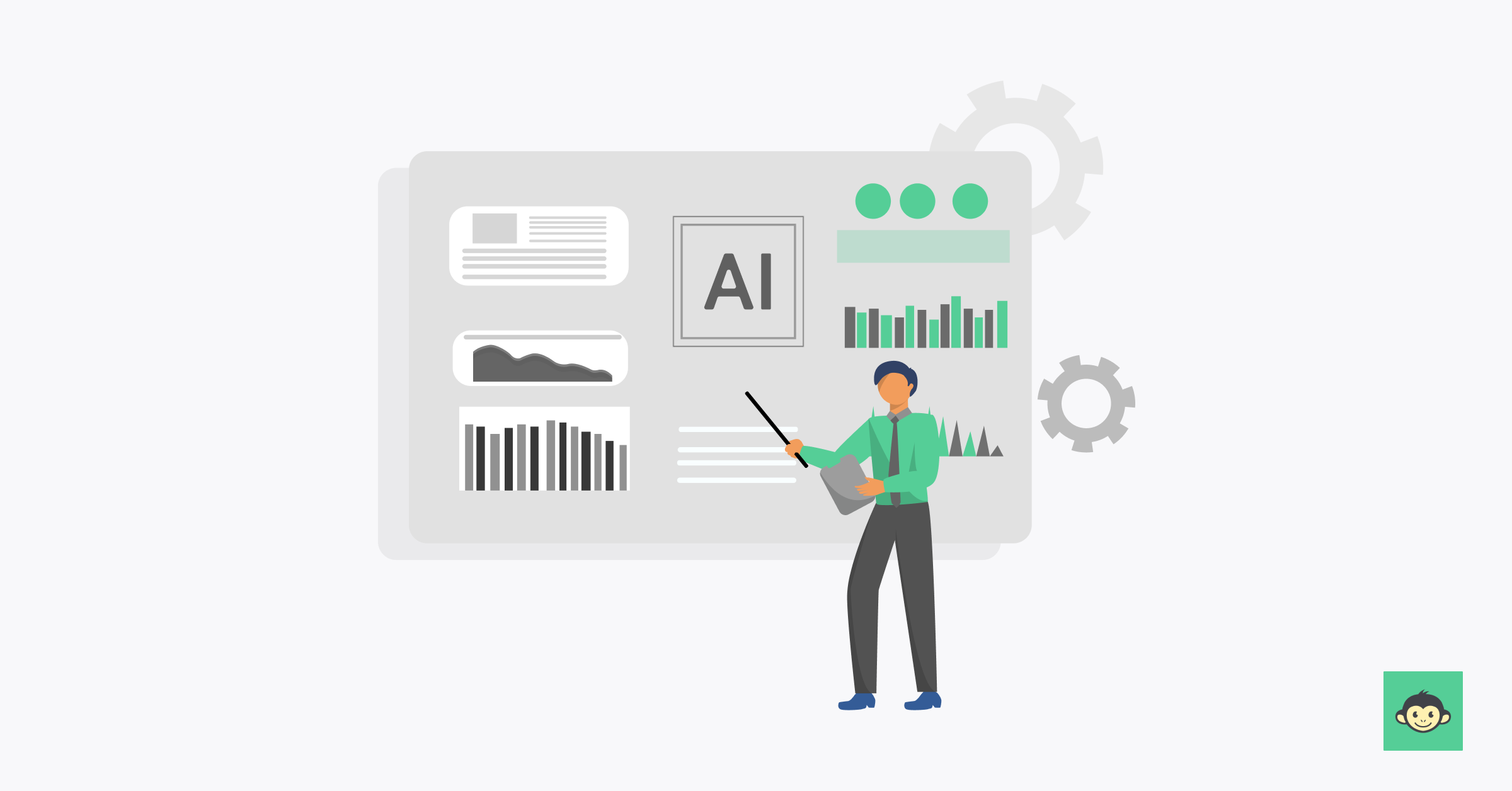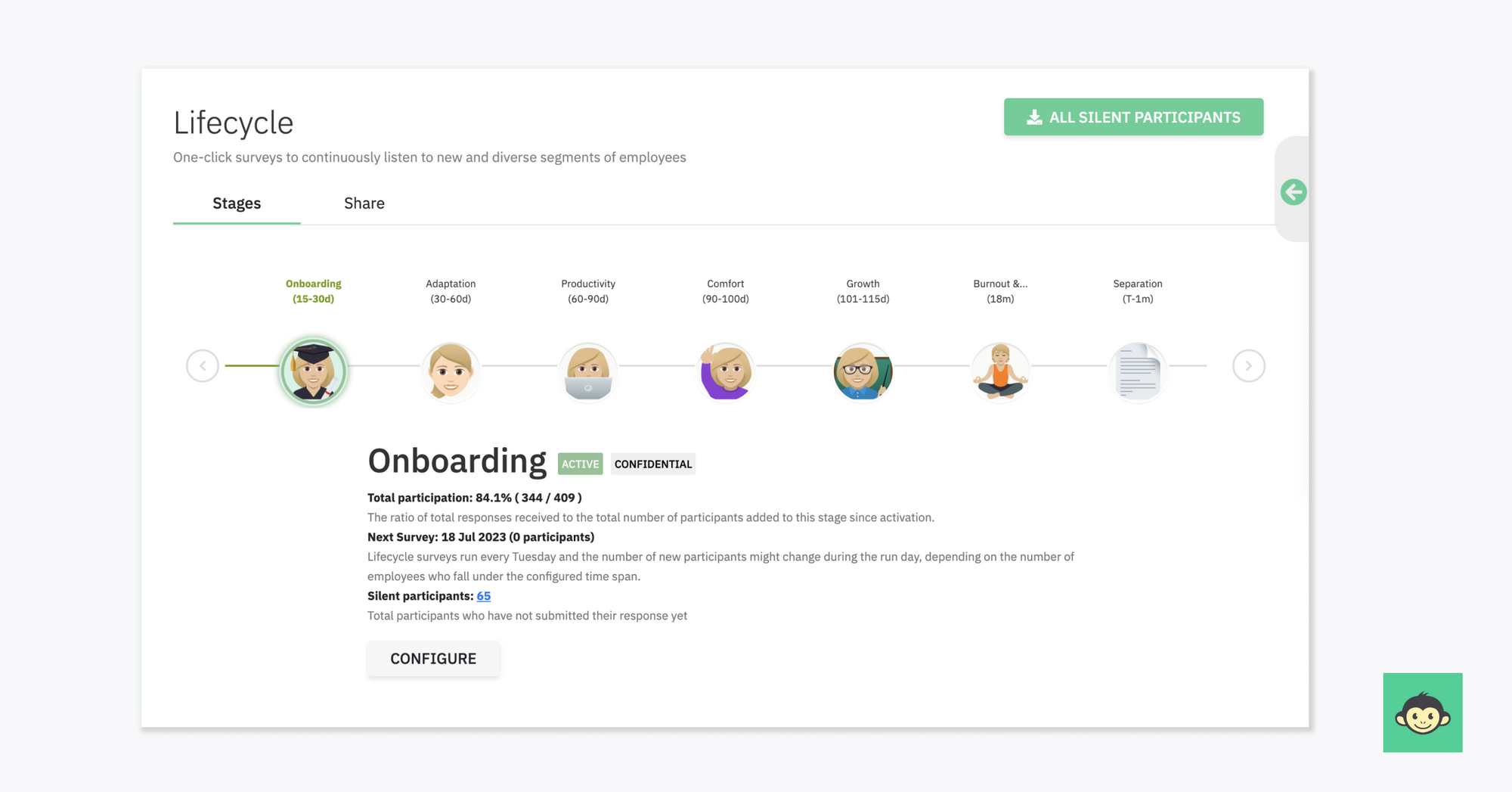How AI can help you with employee life cycle analytics to predict attrition and act on it

Now, I know what you're thinking: "Predicting attrition? Isn't that like trying to forecast the weather on Mars?" Well, hold on to your office chairs because AI is here to revolutionize the way we understand our employees and their life cycle within our organizations.
Yes, you're running a company, and like any good captain, you want to keep your ship sailing smoothly. You've got a fantastic team, but you know, every now and then, an employee decides to jump ship, leaving you stranded like a castaway on a deserted island.
But fear not! AI swoops in like a superhero cape, armed with the power of predictive analytics to help you anticipate who might be thinking of leaving before they even reach for their sailor hat. Talk about getting ahead of the curve!
Wait, there's more! With AI, you not only get to predict attrition, but you can also take action to prevent it. It's like having a crystal ball that not only shows you the future but gives you a roadmap to change it.
Table of contents:-
- What are the 5 key stages of the employee life cycle?
- How can AI help with employee life cycle management?
- 8 Benefits of using AI for employee life cycle analytics
- Challenges and limitations of measuring employee life cycle analytics
- Conclusion
What are the 5 key stages of the employee life cycle?
Alright, all hands on deck! Now that we've set sail on our AI-powered journey to predict attrition, it's time to navigate through the five key stages of the entire employee lifecycle.
Consider these stages as checkpoints on your employees' career roadmap, from the moment they set foot on your ship to the day they wave their goodbyes (hopefully not too soon).
Stage 1: Recruitment and onboarding
Ahoy, matey! This is where the adventure begins. It's the stage where you cast your net and reel in the finest talent acquisition from the vast sea of job seekers. Once you've found your treasure trove of new hires, it's time to welcome them aboard.
A smooth onboarding process sets the stage for a successful voyage together, ensuring your fresh recruits feel supported, valued, and ready to set sail.
Stage 2: Performance management
Now that your crew is settled, it's time to steer them towards success. Performance management helps set expectations, establish goals, and provide regular feedback to ensure everyone is rowing in the same direction. This stage keeps the ship steady, ensuring your crew's efforts align with the company's objectives.
Stage 3: Development and training
Arr, mateys! A ship is only as strong as its crew, and investing in their growth is the key to long-term success. Development and training opportunities help your employees acquire new skills, expand their knowledge, and prepare for future challenges. It's like sharpening their cutlasses, ensuring they're ready to tackle any storm that comes their way.
Stage 4: Compensation and benefits
Ah, the treasure chest! Fair compensation and enticing benefits are the wind that keeps your crew sailing with you. Recognizing their hard work and offering competitive rewards fosters loyalty and motivation. Aye, a happy crew is a dedicated crew!
Stage 5: Exit and offboarding
Unfortunately, all journeys must come to an end. When a crew member decides to disembark, the exit and offboarding stage kicks in. This stage involves a smooth transition, knowledge transfer, and an opportunity to gather valuable insights that will guide your future endeavors.
These five stages form the backbone of the employee life cycle, and guess what? AI can lend a helping hand at each step. So, make sure to scroll more.
How can AI help with employee life cycle management?

Imagine having an AI crewmate that tirelessly collects, analyzes, and interprets HR data from every stage of the life cycle. With its powerful algorithms and machine learning models, artificial intelligence can uncover patterns and trends your human eyes might miss.
It can spot the early signs of disengagement, identify training needs, and even predict attrition, giving you a chance to act before it's too late.
Artificial intelligence can be your trusty first mate during the recruitment process, sorting through resumes with lightning speed, identifying the most promising candidates, and even helping you create personalized onboarding experiences.
Regarding development and training, artificial intelligence can suggest tailored learning paths, recommend relevant courses or resources, and track progress along the way. It's like having a wise mentor who knows exactly what your crew needs to level up their skills.
But that's not all! artificial intelligence can help you navigate the treacherous waters of compensation and benefits, analyzing market trends to ensure your rewards remain competitive and fair.
And when it's time for a crew member to bid adieu, AI can facilitate the offboarding process by automating tasks, capturing knowledge, and identifying areas for improvement.
8 Benefits of using AI for employee life cycle analytics
Brace yourselves as we unravel the treasure trove of advantages that await those who harness the power of artificial intelligence for employee life cycle analytics:
- Enhanced predictive analytics: AI algorithms can sift through mountains of data analysis, enabling you to predict attrition, identify flight risks, and take proactive measures to retain your valuable crew members.
- Improved recruitment efficiency: AI technology streamlines the recruitment process by automating resume screening, identifying top candidates, and reducing time-to-hire. It's like having a skilled crewmate who tirelessly scouts for the best talent.
- Personalized onboarding: AI can create personalized onboarding experiences tailored to individual employees, ensuring a smooth transition and a strong sense of belonging right from the start.
- Data-driven decision-making: AI-powered analytics provide you with data-driven insights at each stage of the life cycle, empowering you to make informed decisions that drive performance and engagement.
- Enhanced employee experience: AI can analyze employee sentiment, engagement levels, and feedback to identify areas for improvement and create a more positive and fulfilling employee experience.
- Skill development recommendations: By analyzing individual and team data, artificial intelligence can recommend personalized skill development paths, matching employees with relevant training and growth opportunities.
- Proactive performance management: AI can monitor performance metrics in real-time, enabling hr managers to provide timely feedback, address issues, and recognize outstanding achievements.
- Cost and time savings: With AI automating manual tasks and streamlining processes, you can save valuable time and resources, allowing you to focus on strategic initiatives and drive organizational success.
Challenges and limitations of measuring employee life cycle analytics
While measuring metrics offers a bounty of benefits, it's not without its fair share of obstacles. Let's navigate through these challenges and explore why relying on an employee engagement software like CultureMonkey can be a lifesaver:
- Data overload: With vast amounts of data pouring in from various sources, companies often struggle to make sense of it all. Analyzing and interpreting the data can be like searching for buried treasure in a sea of information.
- Data quality and accuracy: Inaccurate or incomplete data can lead to flawed conclusions. It's like navigating through a foggy night without a reliable compass.
- Integration of data sources: Many companies use multiple tools and platforms for different human resources processes, making it difficult to integrate data seamlessly. This fragmentation can hinder a comprehensive view of the employee life cycle.
- Privacy and security concerns: Handling sensitive employee data requires a secure and compliant approach. Companies must walk the plank of ensuring data privacy and protection.
- Limited predictive capabilities: Traditional analytics may provide historical insights, but they might lack the ability to predict future trends accurately. It's like sailing blind without a weather forecast.
- Actionable insights: Data is valuable only if it leads to actionable insights. Companies may struggle to translate raw data into practical strategies for improvement.
- Lack of employee feedback: Employee engagement analytics rely heavily on gathering employee feedback. However, getting honest and constructive feedback can be challenging without the right tools.
Now, let's hoist the flag of CultureMonkey! This employee engagement tool is like a seasoned navigator, helping you navigate through these challenges and unlock the true potential of your crew. CultureMonkey simplifies the process of collecting employee feedback, ensuring you receive authentic insights to fuel your data-driven decisions.
By centralizing data from various sources, CultureMonkey provides a comprehensive view of the employee life cycle, making it easier to identify trends and areas for improvement. With robust security measures in place, you can rest assured that your data is safe and protected.
But that's not all! CultureMonkey's AI-powered analytics go beyond historical data, offering predictive capabilities to help you anticipate and prevent attrition. With clear and actionable insights, this tool empowers you to steer your ship towards a culture of engagement and growth.
Conclusion
We've reached the end of our exhilarating journey exploring how artificial intelligence can revolutionize employee life cycle analytics and predict attrition. We've discovered the challenges and limitations along the way, but fear not!
The tool to conquer these obstacles is CultureMonkey. With its powerful AI-driven analytics, CultureMonkey helps you navigate through the choppy waters of data overload, privacy concerns, and limited predictability.
It empowers you to gather authentic employee feedback, make data-driven decisions, and steer your ship towards a culture of engagement and growth.
With artificial intelligence and CultureMonkey as your allies, your employee lifecycle management will thrive, and your organization will sail towards new horizons of prosperity.
